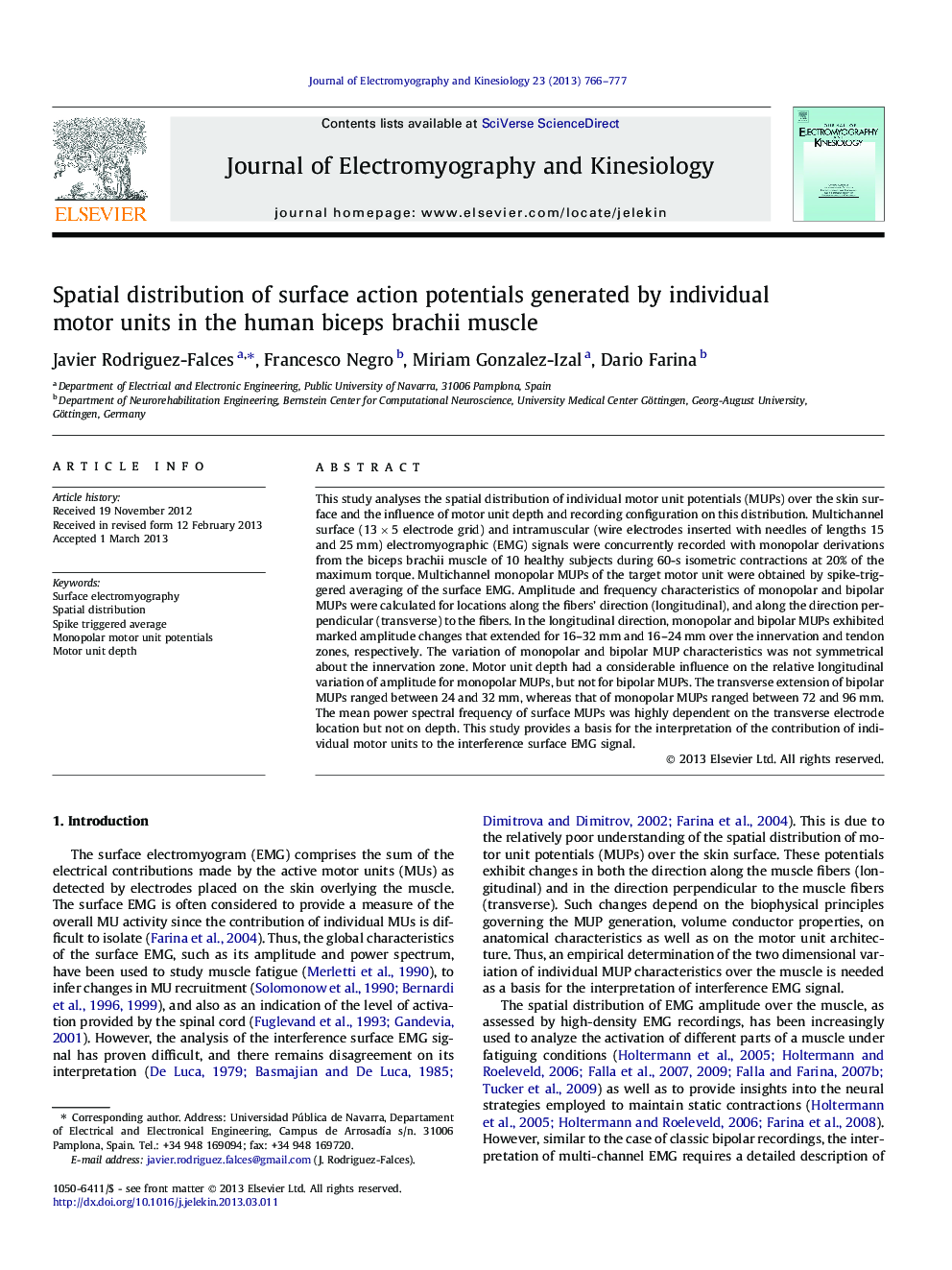| Article ID | Journal | Published Year | Pages | File Type |
|---|---|---|---|---|
| 4064515 | Journal of Electromyography and Kinesiology | 2013 | 12 Pages |
Abstract
This study analyses the spatial distribution of individual motor unit potentials (MUPs) over the skin surface and the influence of motor unit depth and recording configuration on this distribution. Multichannel surface (13Â ÃÂ 5 electrode grid) and intramuscular (wire electrodes inserted with needles of lengths 15 and 25Â mm) electromyographic (EMG) signals were concurrently recorded with monopolar derivations from the biceps brachii muscle of 10 healthy subjects during 60-s isometric contractions at 20% of the maximum torque. Multichannel monopolar MUPs of the target motor unit were obtained by spike-triggered averaging of the surface EMG. Amplitude and frequency characteristics of monopolar and bipolar MUPs were calculated for locations along the fibers' direction (longitudinal), and along the direction perpendicular (transverse) to the fibers. In the longitudinal direction, monopolar and bipolar MUPs exhibited marked amplitude changes that extended for 16-32Â mm and 16-24Â mm over the innervation and tendon zones, respectively. The variation of monopolar and bipolar MUP characteristics was not symmetrical about the innervation zone. Motor unit depth had a considerable influence on the relative longitudinal variation of amplitude for monopolar MUPs, but not for bipolar MUPs. The transverse extension of bipolar MUPs ranged between 24 and 32Â mm, whereas that of monopolar MUPs ranged between 72 and 96Â mm. The mean power spectral frequency of surface MUPs was highly dependent on the transverse electrode location but not on depth. This study provides a basis for the interpretation of the contribution of individual motor units to the interference surface EMG signal.
Related Topics
Health Sciences
Medicine and Dentistry
Orthopedics, Sports Medicine and Rehabilitation
Authors
Javier Rodriguez-Falces, Francesco Negro, Miriam Gonzalez-Izal, Dario Farina,
